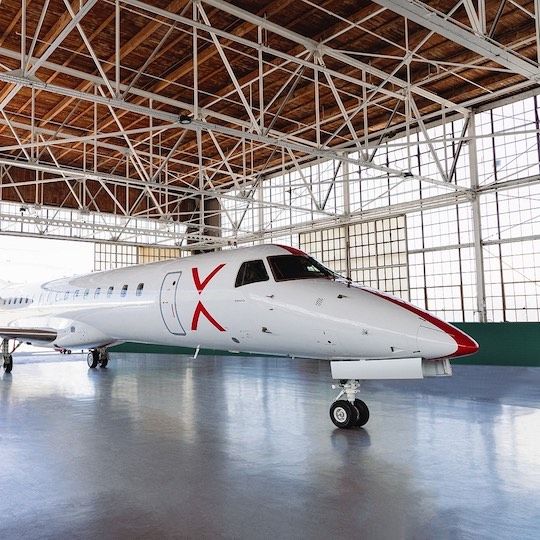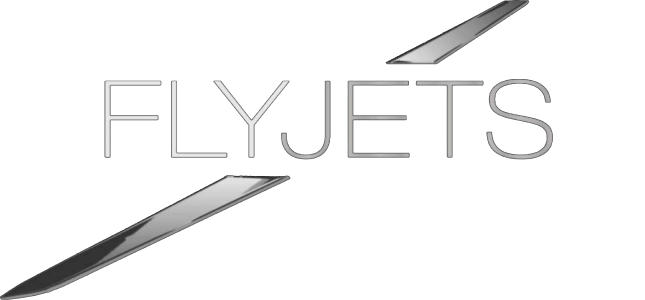Successful Part 380 Air Charter Business Model Under Fire: Greg Cirillo
It’s not often that the Federal Aviation Administration decides on its own to review a regulation without some external event compelling the review. But the FAA decided in late 2023 to reconsider and likely change a set of rules that has allowed scheduled air transportation by charter air carriers – including the Blade One, FlyXO and JSX models we know and love - for 45 years.

Photo via JSX on Instagram @flyjsx.
Some background on air carrier law: a traditional airline (like American Airlines, Delta, Southwest and United, which currently control over 80% of our market today) is overseen by the FAA, which regulates safety, and the Department of Transportation, which regulates financial fitness and consumer protection. The airlines operate under FAA rules called “Part 121” of the Federal Aviation Regulations. Part 121 certification is considered the pinnacle of operating safety with voluminous rules governing the aircraft, flight crew and flight operations of the big airlines. Separately, a charter operator is generally defined by the FAA as “on demand,” meaning the operator flies when a customer engages it to fly – not on a schedule. The FAA regulates charter operators under Part 135 certification standards, which maintain a very high standard of safety, but in some areas crew training requirements and other standards are less rigorous than those associated with Part 121. The DOT has minimal involvement in Part 135/Charter operators because the on-demand nature of the business does not require financial oversight or consumer protection.
That brings us to a niche called Part 380 or Public Charter, which allows anyone (meeting limited qualifications) to organize a scheduled flight while contracting with a separate air carrier to operate the flight. The organizer/operator of a public charter is not an air carrier itself, and the DOT therefore created Public Charter rules that require the organizer of the flight to, among other things, escrow passengers’ money in an account until the trip occurs and prepare and file a prospectus with the DOT focused largely on the protection of the passengers. A Public Charter organizer may use the services of either a Part 121 airline (like the one that you may have booked to fly with your classmates on a Boeing 737 to Cancun on a Spring Break trip) or a Part 135 charter operator. When a Part 380 is covered by a Part 135 operator it is either a flight that looks and feels like a major airline “regional” flight limited to 30 seats to remain in Part 135 (what we will call a “380/135 Basic”), or it is marketed as a luxury flight using upscale private jets for major events or shuttles, which we will call a “380/135 Lux.” A typical 380/135 Lux flight will often leave from private jet terminals and smaller airports, offering greater convenience and exclusivity – think JSX, Blade One and FlyXO.

Photo via Blade on Instagram @flyblade.
In the past fifteen years, Part 380 Public Charter prospectus filings and operations have become streamlined to the point that these flights are common and booking a flight on a Public Charter looks like any scheduled airline flight to the consumer. The modestly reduced operating costs and aircraft seat limits for Part 135 operators have made 380/135 Basic flights an attractive business model for filling in low-volume, point-to-point routes that do not appeal to the scheduled airlines. The 380/135 Lux offerings fill a different niche – bringing premium private jet service on a per-seat sales model, and eliminating the hassles associated with commercial airports by basing flights from the private terminals of general aviation airports.
In 2021 (the most current FAA information available), the big Part 135 carriers involved in Public Charters were XO Jet, Advanced Air, Boutique Air, Ultimate Air Shuttle/Ultimate Jet Charters, Swift Air, USAC Airways. These are not necessarily the names you would see when booking their 135 flights, because the flights are listed under the Public Charter organizer, like BLADE Urban Air Mobility or JetSuiteX. Some of these are 380/135 Basic and some are 380/135 Lux operations.

Photo via JSX on Instagram @flyjsx.
The Part 380 niche has grown to the point that it has attracted the ire of the scheduled airline industry. To quote the Air Line Pilots Association (ALPA) in its response to the FAA’s proposed review of the rules, a Public Charter using a Part 135 charter operator is “a legal subterfuge [that] allows charter operations to mimic scheduled service while adhering to a set of lesser safety rules.” To be clear, there is nothing illegal about a Public Charter being operated by a Part 135 charter carrier, and for 45 years the reduced safety claims have not been supported by experience. But, as the ALPA filing points out, these Public Charter operations – particularly the 380/135 Basic flights – are starting to compete with the airlines’ regional operations and are presumably threatening the roster of ALPA members. In effect, the legacy airline industry was willing to tolerate Public Charters under Part 135 so long as they were just a small nuisance; but they have become more than that. And now, ALPA wants what we now know as Part 380 activity to instead be regulated under Part 121. Motivations aside, the ALPA correctly points out that a Part 135 operation enjoys a lighter regulatory standard for safety as well as security. The difference is most evident in the qualifications and training requirements for pilots: a Part 121 cockpit in an Embraer 145 aircraft will be staffed by two ATPs (Air Transport Pilots) while a Part 135 can operate the same aircraft (certified to no more than 30 seats) and have one ATP and one commercial certificate holder. This makes more pilots available, and potentially less expensive. Both Part 121 pilots need to be type rated in the aircraft, while only one of the Part 135 pilots needs to carry that type rating. Theoretically, lighter regulation allows for lower pricing, and in some cases a 380/135 Basic will compete on price with the major airlines. However, the 380/135 Lux flights offer comfort and convenience rather than lowest cost. On paper, ALPA’s safety-based assertion has merit, but there has been no evidence of reduced safety among Part 380 charters in the form of reported incidents. One wonders why the ALPA and the airlines would not use the Part 135 data to advocate for lighter regulation for aircraft under 30 seats operated under Part 121 rather than putting Part 135 under heavier Part 121 regulation.
Opponents of the FAA rule review point out that we are suffering under a national shortage of pilots, and the 135/380 model is a reasonable and proven solution to the shortage using existing law to exploit more flexible pilot rules. It is hard to imagine that Part 380 poses a threat to pilots holding an ATP as there are still more open pilot jobs than pilots to fill them. Critics also point out that the safety of a charter flight does not change because the flight is booked using the Public Charter regulations; there is no discernible problem being solved.
This controversy will play out over a series of months as interested parties make their case to the FAA and indirectly through Congress and Executive Branch lobbying efforts. The legacy airline industry is certainly regretting that they did not fight this fight fifteen years ago when the Public Charter industry was much smaller and less active in the D.C. lobbying scene. The likely outcome is that the general public will be made hypothetically safer by tighter regulations, and will simultaneously be required to pay for that benefit in higher airfares.
Greg Cirillo is a founding Member of HCH Legal in Washington, DC, providing aviation regulatory, transaction and controversy services to the aviation industry.
